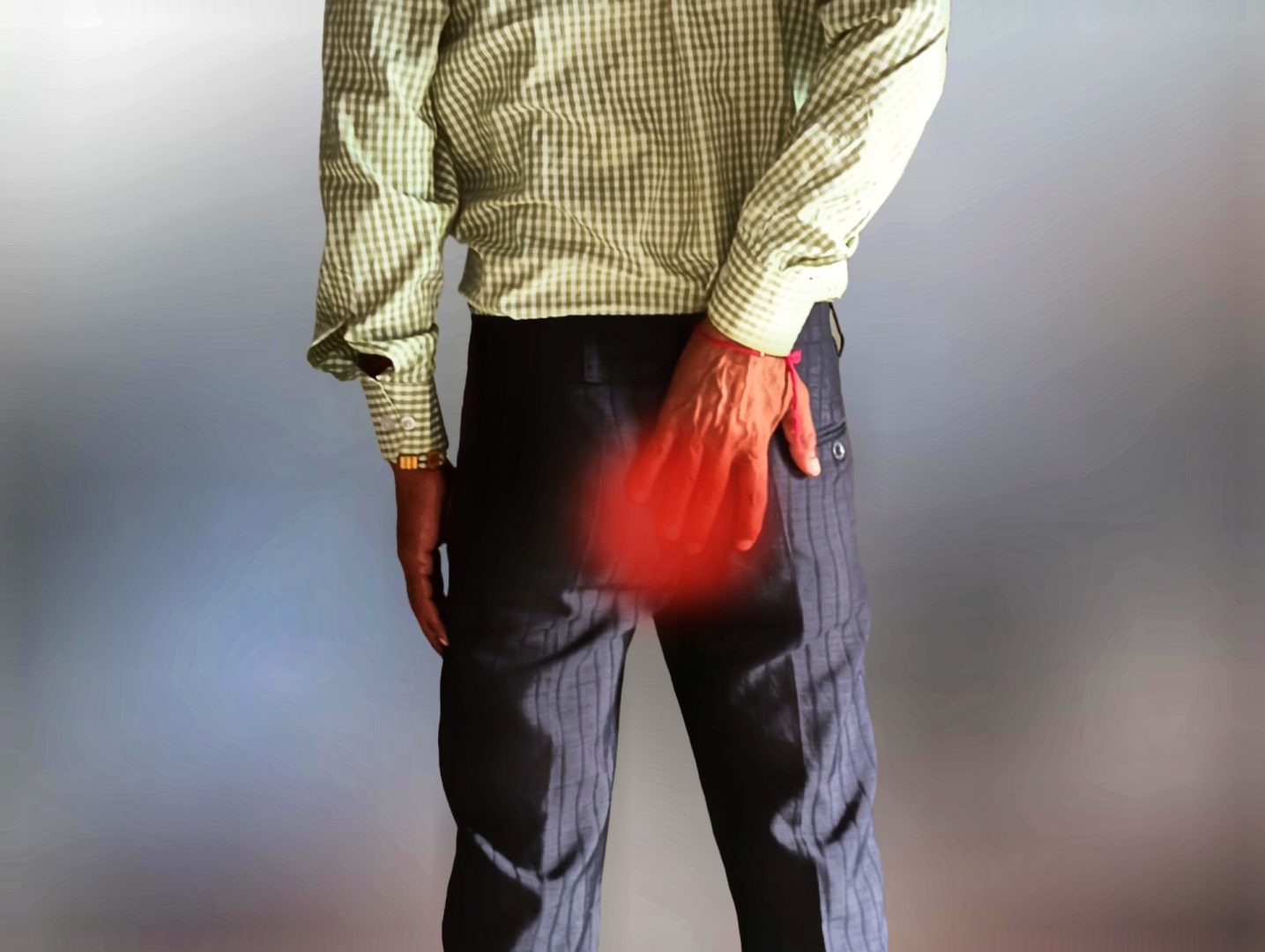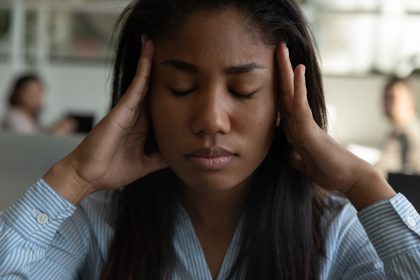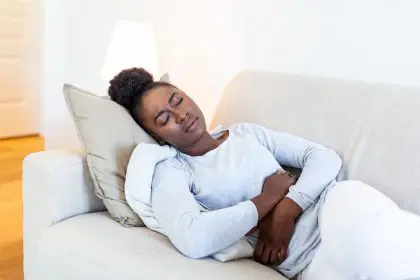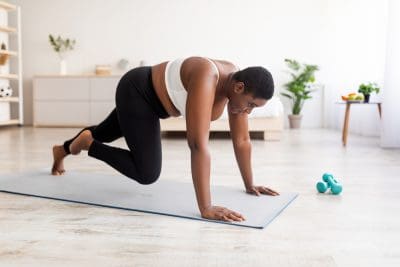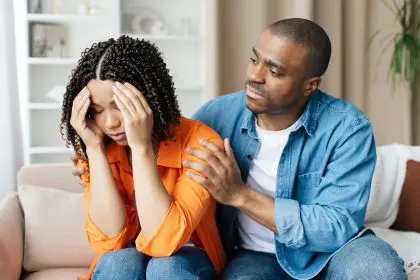Hemorrhoids, though incredibly common, remain a topic many people hesitate to discuss openly despite affecting nearly half of all adults by age 50. This uncomfortable condition involves swollen veins in the lower rectum and anus, causing varying degrees of pain, itching, and bleeding. While severe cases may require medical intervention, most mild to moderate hemorrhoids respond well to specific home treatments that address both symptoms and underlying causes.
Understanding hemorrhoids: The foundation for effective treatment
Hemorrhoids develop when the veins around the anus stretch under pressure and swell, similar to varicose veins in the legs. This swelling can occur inside the rectum (internal hemorrhoids) or under the skin around the anus (external hemorrhoids).
Internal hemorrhoids typically cause painless bleeding during bowel movements and may prolapse, extending outside the anal opening. When protruding, they might cause discomfort but usually retract naturally or can be pushed back inside.
External hemorrhoids form under the sensitive skin around the anus, causing more noticeable pain, especially when irritated. If a blood clot forms inside an external hemorrhoid (thrombosed hemorrhoid), the pain can become suddenly severe and may require special treatment.
Several factors increase hemorrhoid risk, with chronic constipation and straining during bowel movements being the primary culprits. The pressure from straining disrupts blood flow and weakens supporting tissues. Pregnancy, obesity, heavy lifting, prolonged sitting, and chronic diarrhea similarly increase pressure on these veins.
Effective hemorrhoid management combines immediate symptom relief with addressing underlying causes to prevent recurrence. The most successful approaches incorporate dietary changes, topical treatments, proper hygiene practices, and lifestyle modifications.
Dietary fiber: The cornerstone of hemorrhoid management
Among all home remedies, increasing dietary fiber stands as the most evidence-backed approach for both treating and preventing hemorrhoids by addressing the root cause of excessive straining.
Soluble fiber, found in oats, barley, legumes, and certain fruits, dissolves in water to form a gel-like substance that softens stool. Insoluble fiber, abundant in whole grains, nuts, and vegetables, adds bulk to stool, helping it pass more quickly through the digestive tract. Both types work together to create ideal stool consistency – soft enough to pass easily without excessive straining, yet formed enough to prevent diarrhea.
Specific high-fiber foods particularly effective for hemorrhoid management include prunes and other dried fruits, which combine fiber with natural laxative compounds; ground flaxseeds, which provide both fiber types along with beneficial omega-3 fatty acids; beans and lentils, offering substantial fiber alongside protein; and cruciferous vegetables like broccoli and Brussels sprouts, which provide fiber with minimal calories.
The fiber transition requires careful implementation. Increasing fiber too rapidly can cause bloating, gas, and discomfort. Begin by adding just 5 grams of fiber daily for one week, then gradually increase until reaching 25-35 grams daily. Spreading fiber consumption throughout the day rather than consuming it all at once improves tolerance.
Adequate hydration proves essential when increasing fiber intake. Without sufficient water, fiber can actually worsen constipation rather than relieve it. Aim for at least 8-10 glasses of water daily, with additional fluid during exercise or hot weather.
For those struggling to consume adequate fiber through diet alone, supplements like psyllium husk (Metamucil), methylcellulose (Citrucel), or wheat dextrin (Benefiber) can help bridge the gap. Start with a small dose and gradually increase to avoid digestive discomfort.
Sitz baths: The simple yet powerful soaking solution
Sitz baths provide remarkable relief for hemorrhoid discomfort through several mechanisms that address both pain and inflammation without medication.
The warm water increases blood flow to the anal area, promoting healing by bringing fresh oxygen and nutrients to damaged tissues while washing away waste products. This improved circulation helps shrink swollen hemorrhoidal vessels and reduce inflammation.
The gentle cleaning action removes irritants, bacteria, and leftover stool particles that can worsen itching and inflammation. This cleansing proves particularly important after bowel movements when the area is most vulnerable to irritation.
The moist heat relaxes the anal sphincter muscles, releasing tension that might otherwise contribute to pain and discomfort. This muscle relaxation also improves blood flow, further enhancing the healing process.
Proper sitz bath technique maximizes benefits while preventing potential complications. Fill a clean bathtub with 3-4 inches of warm (not hot) water, or use a specialized sitz bath basin that fits over a toilet seat. Soak the anal area for 15-20 minutes, 2-3 times daily, especially after bowel movements.
For enhanced therapeutic effects, consider adding specific substances to the bath water. Epsom salt (magnesium sulfate) reduces inflammation and provides gentle relief for pain and itching when added at 1-2 cups per bath. Plain table salt at 2 tablespoons per bath helps draw out excess fluid from swollen hemorrhoids through osmosis.
Following the bath, pat the area dry gently with a soft towel rather than rubbing, which can irritate sensitive tissues. Avoid using soap in the anal area during sitz baths, as it can cause further irritation and dryness.
For those unable to take regular sitz baths, alternatives include using specialized sitz bath kits that fit over toilet seats, applying warm compresses to the area for 10-15 minutes, or using moist towelettes instead of dry toilet paper for cleaning after bowel movements.
Topical treatments: Direct relief for hemorrhoid symptoms
While dietary changes and sitz baths address underlying causes, topical treatments provide direct, immediate relief for hemorrhoid symptoms through various mechanisms.
Witch hazel, a natural astringent derived from the witch hazel shrub, reduces inflammation, itching, and bleeding by shrinking swollen tissue and strengthening blood vessels. Apply witch hazel using pre-moistened pads or by soaking a cotton ball in the liquid and gently pressing against hemorrhoids after bowel movements and sitz baths.
Aloe vera gel provides cooling relief for burning and itching while promoting tissue healing through its anti-inflammatory and antimicrobial properties. Use pure aloe vera gel (either directly from the plant or as a 100% commercial preparation without alcohol) applied gently to external hemorrhoids several times daily.
Cold therapy using ice packs or cold compresses constricts blood vessels and numbs nerve endings, reducing pain and swelling particularly during acute flare-ups. Wrap ice in a soft cloth and apply for 10-15 minutes at a time, several times daily, especially after bowel movements.
Over-the-counter hemorrhoid creams and ointments contain varying combinations of ingredients that address multiple symptoms simultaneously. These typically include local anesthetics (like lidocaine or benzocaine) to temporarily numb discomfort, vasoconstrictors (like phenylephrine) to shrink swollen tissue, and protectants (like mineral oil or cocoa butter) to prevent irritation.
For maximum effectiveness, apply topical treatments to clean, dry skin after sitz baths. Follow package directions regarding frequency, and discontinue use if you develop sensitivity or irritation to any product. Avoid using steroid creams for more than seven consecutive days without medical supervision, as they can thin the delicate anal tissue with prolonged use.
Natural oils offer gentler alternatives for sensitive individuals. Coconut oil provides antimicrobial properties along with moisturizing benefits when applied to external hemorrhoids. Tea tree oil, diluted to no more than 5-10% in a carrier oil like coconut or olive oil, offers antimicrobial and anti-inflammatory benefits but should be used cautiously as it can irritate sensitive skin.
Physical activity: The overlooked hemorrhoid remedy
Regular physical activity plays a crucial but often overlooked role in both hemorrhoid prevention and treatment through multiple beneficial mechanisms.
Exercise improves overall circulation, including blood flow to the rectal area, reducing the likelihood of blood pooling in hemorrhoidal veins. Improved circulation also enhances the delivery of nutrients and oxygen to tissues, promoting faster healing of existing hemorrhoids.
Physical activity stimulates intestinal contractions, moving stool through the digestive tract more efficiently and reducing constipation risk. This improved intestinal motility minimizes straining during bowel movements—the primary mechanical factor in hemorrhoid development.
Specific exercises particularly beneficial for hemorrhoid management include walking, which provides gentle stimulation of intestinal motility without placing pressure on the rectal area; swimming, which offers cardiovascular benefits without the downward pressure of weight-bearing exercises; and yoga, which can improve digestive function while reducing stress that might contribute to irregular bowel habits.
Kegel exercises, which strengthen the pelvic floor muscles, indirectly support hemorrhoid recovery by improving blood flow to the region and enhancing muscle tone that supports rectal veins. Practice by tightening the muscles used to stop urination, holding for 5-10 seconds, then releasing, repeated 10-15 times several times daily.
Timing exercise appropriately maximizes benefits while minimizing potential problems. Avoid vigorous exercise during acute hemorrhoid flare-ups, which might increase discomfort. Schedule physical activity about an hour after meals to take advantage of the natural gastrocolic reflex that stimulates bowel movements.
Certain exercises require caution if you have hemorrhoids. Heavy weightlifting increases intra-abdominal pressure and may worsen hemorrhoids, particularly when using improper breathing techniques. Similarly, cycling can place pressure directly on existing hemorrhoids, potentially exacerbating symptoms.
Proper bathroom habits: Prevention through daily practice
Daily bathroom routines significantly impact hemorrhoid development and healing through mechanical effects on the anal tissue and veins.
Respond promptly to the urge to defecate rather than delaying bowel movements. Postponing bowel movements allows more water absorption from stool, making it harder and requiring more straining to pass. The body’s natural urge typically indicates optimal timing for easiest passage.
Limit time spent on the toilet to 5 minutes or less. Extended sitting on the toilet increases pressure on rectal veins, potentially worsening existing hemorrhoids or contributing to new ones. Avoid bringing reading materials or electronic devices into the bathroom, which encourages prolonged sitting.
Adopt proper positioning during bowel movements to reduce straining. Placing feet on a small footstool (6-8 inches high) while sitting on the toilet creates a squatting position that straightens the rectal angle, allowing for easier stool passage with less straining. Leaning forward slightly with elbows on knees further enhances this anatomical advantage.
Practice gentle cleaning after bowel movements to prevent irritation. Use moistened, fragrance-free, alcohol-free wipes or plain water for cleaning rather than dry toilet paper, which can irritate sensitive tissues. Always wipe gently from front to back, patting rather than rubbing the area, to minimize trauma to hemorrhoids.
Avoid using scented or colored toilet paper, which contains chemicals that can irritate sensitive rectal tissues and potentially worsen hemorrhoid symptoms. Similarly, avoid soaps, bubble baths, and other potentially irritating products in the anal area.
When to seek medical care for hemorrhoids
While home remedies effectively manage most hemorrhoids, certain situations warrant professional medical evaluation.
Rectal bleeding always deserves medical attention to rule out more serious conditions like colorectal cancer, inflammatory bowel disease, or diverticular bleeding. Even if you believe hemorrhoids cause your bleeding, consultation provides peace of mind through proper diagnosis.
Severe pain, especially if it develops suddenly, may indicate a thrombosed hemorrhoid (containing a blood clot) that might benefit from early intervention. These can sometimes be treated with simple in-office procedures if addressed within the first 72 hours.
Persistent hemorrhoid symptoms despite two weeks of consistent home treatment suggest the need for medical evaluation. Prescription-strength treatments or office procedures might provide relief when home remedies prove insufficient.
Large or prolapsed hemorrhoids that cannot be pushed back inside may require medical intervention to prevent complications like strangulation, where blood supply gets cut off to the hemorrhoidal tissue.
Several effective medical treatments exist for hemorrhoids that don’t respond to home care. Rubber band ligation places a small elastic band around an internal hemorrhoid’s base, cutting off blood supply until it shrinks and falls off. Sclerotherapy involves injecting a solution that shrinks hemorrhoids by scarring the tissue. For severe cases, surgical options like hemorrhoidectomy (complete removal) or stapled hemorrhoidopexy (stapling prolapsed tissue) might be recommended.
Integrating treatments for optimal hemorrhoid relief
The most effective approach to hemorrhoid management combines multiple strategies addressing both symptoms and causes simultaneously.
For immediate relief during painful flare-ups, start with cold therapy and topical treatments to reduce swelling and discomfort. Follow with sitz baths 2-3 times daily to clean the area and promote healing through improved circulation.
Simultaneously implement dietary changes, focusing first on increased water intake while gradually adding fiber to prevent constipation. This approach addresses the underlying cause while other treatments manage current symptoms.
Incorporate appropriate physical activity as discomfort allows, beginning with gentle walking and gradually increasing intensity as symptoms improve. Establish proper bathroom habits, including responding promptly to bowel urges and using correct positioning.
Maintain these practices even after symptoms resolve to prevent recurrence. Hemorrhoids often return when preventive measures lapse, particularly dietary and bathroom habits that prevent constipation and straining.
By systematically combining these evidence-based approaches, most people experience significant hemorrhoid relief within 1-2 weeks. This comprehensive strategy not only addresses current discomfort but establishes healthy patterns that prevent future episodes of this common but manageable condition.

